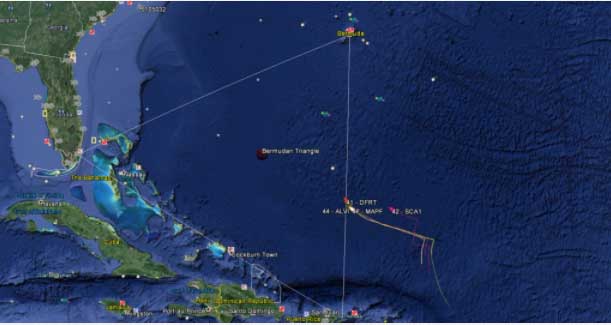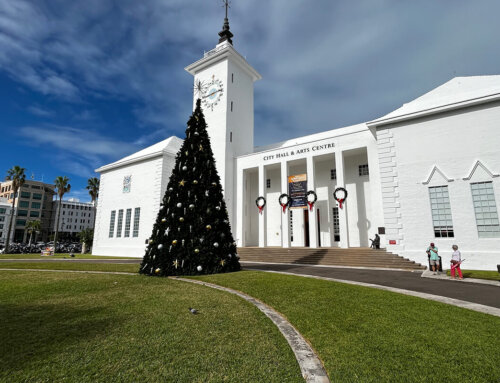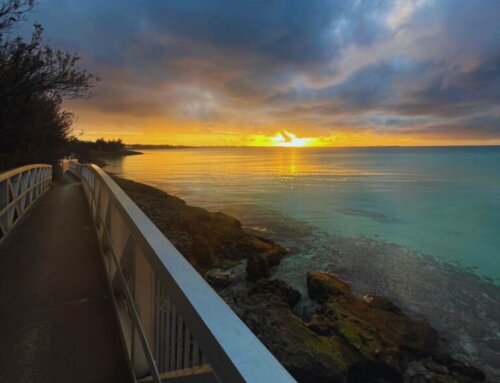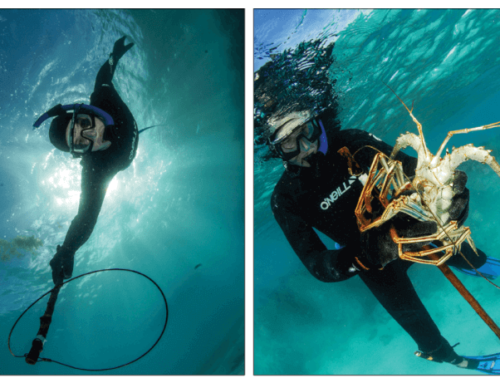By Alexandra Lima
There are many things that make Bermuda famous. All over the word, we are known for our shorts, breathtaking views and perhaps even a swizzle or two, but the most talked about folklore is the mystery of the Bermuda Triangle.
There are many theories, myths and legends about the infamous ‘triangle’. For those living in North America, you might have heard a joking reference of it once or twice while flying or cruising across the Atlantic Ocean. But many remain uncertain about its existence, leaving it as one of those tall tales you can accept but not fully understand.
Contrary to many beliefs, the Bermuda Triangle is not just the small area surrounding Bermuda. It is much more vast than people think. In fact, it unofficially exists from Bermuda to Miami, Florida to San Juan, Puerto Rico and back.
The legend of the Bermuda Triangle begins hundreds of years ago, with many ships sinking or disappearing in the area. The legend continues through the 1940’s with numerous unexplained plan crashes and disappearances, many of which remain unsolved mysteries. Numerous theories have been devised to conclude these various tragedies; as humans we like to rationalize solutions to problems. In true human nature, we have devised an abundance of possible answers to debunk the Bermuda Triangle Mystery, leaving us overwhelmed with choice.
Wading through the endless possibilities can often become more confusing, but to make it easier to understand, I have detailed three logical explanations in the case of the Bermuda Triangle.
- Bermuda’s Reefs
One very logical solution to the many shipwrecks close to the island would be the large reef system that surrounds us. Bermuda has 230 square miles of offshore reefs, 10 times the physical land area of Bermuda itself.
The many wrecks surrounding Bermuda date back five centuries. With 13 official major shipwrecks since 1940 alone, Bermuda became infamously knows as ‘Shipwreck Island’ of the Western Atlantic. These wrecks do not include numerous yacht wrecks or between 4 -6 big ship groundings that are believed to have happened during World War 2.
Considering the intricate reef system along with the available navigational equipment dating as far back as the 1800’s, a wreck within one nautical mile of Bermuda is not an illogical assumption. Event the best local Captains are careful maneuvering in and outside the complex reef system.
- Weather
Bermuda is one of the nine smallest places in the world, located about 600 miles east of the nearest mainland. Due to it is relative isolation in the Atlantic Ocean, combined with its 21 square miles; Bermuda is susceptible to regular extreme weather conditions.
Studies conducted by the Bermuda Weather Service found that from 1609 to the present day, devastating storms affect the Island on average, every six to seven years. These devastating storms come in the form of Hurricanes, which are severe subtropical or tropical storms with heavy rains and intense winds, which blow in a large circular motion around a center “eye.” Most hurricanes occur in August, September and October, however Hurricane season in the Atlantic officially runs for six months, from June 1 to November 30. During this period, the area surrounding Bermuda can be subject to violent and unexpected weather changes.
Bermuda itself is usually quite well protected by its large reef system but high waves on top of a storm surge can cause clear problems for any vessel making it’s way past the island. Averaging at least one storm passing within 180 nautical miles off the island every year, these short but intense storms can build up and dissipate very quickly, causing rouge waves not to mention obvious navigational problems for both air and sea travel.
- Methane Gas
The theory of pockets of Methane Gas exploding to the ocean surface is a leading scientific philosophy to the disappearance of ship’s and planes in the Bermuda Triangle, however science has more recently established solid proof.
The theory is explained as large concentrations of methane gas trapped on the ocean floor in the area of Bermuda, Miami and Puerto Rico rupturing and erupting on the ocean surface without warning. This would cause any ship in the vicinity to be engulfed by this blowout of gas, making it sink and quickly be covered by the unsettled sediment.
New findings, as recent as last week, have confirmed that Methane Gas is an extremely viable explanation in the case of the Bermuda Triangle. Experts at the Arctic University of Norway dove deep into the Barents Sea and found scientific proof behind this phenomenon. The Daily Mail reported on March 15th, 2016 that “Scientists have found giant craters on the sea bed around the coast of Norway, marking spots where huge bubbles of methane have apparently exploded. The craters are up to half a mile wide and 150 foot deep and appear to have been caused by gas leaking from deposits of oil and gas buried deeper in the sea floor. The gases are thought to accumulate in sea-floor sediments before bursting through the sea bed into the water above.”
A question of whether or not these explosions can sink a ship is yet to be determined, as well as if similar craters exist in the area known as the Bermuda Triangle. However, these discoveries are exciting evidence to support this theory and thus provide a plausible explanation for the case of the Bermuda Triangle.
There are many theories out there that both support and contradict the above hypotheses about the ‘triangle’. Many explanations you might have heard involve magnetic poles, topography or even the supernatural. Regardless of what you choose to believe, one thing is certain, getting lost in the Bermuda Triangle will always be one of those phenomenon’s widely debated beyond logic and reasoning.







